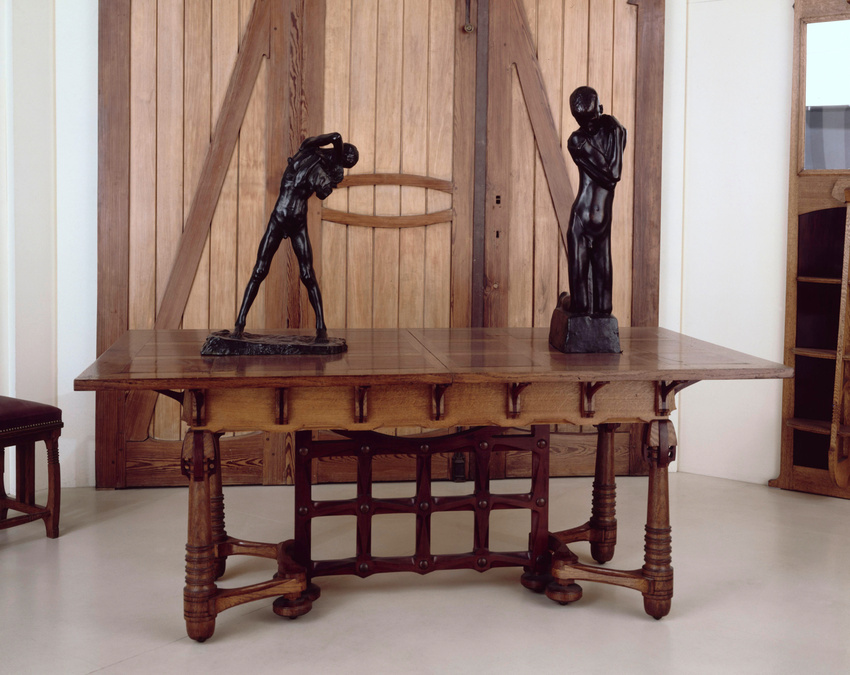Table de salle à manger
In 1897-1898, the architect Paul Hankar built a mansion at 48 rue Defacqz in Brussels, for the widow of Vincent Ciamberlani, a rich aristocrat originally from Bologna.
Hankar was given free rein to decorate the dining room. The room was austere and majestic, not unlike the dining room in his own house. Two photographs taken at the time give a clear idea of the dining room in the Ciamberlani mansion.
Everything has been carefully designed to make a perfect setting for its main piece of furniture. The squares of the oak parquet evoke the table top which is also in a checkerboard pattern but made of mahogany in an orthogonal oak frame. The play of oak and mahogany is echoed on the wainscoting and the boxed ceiling. The design of the brackets supporting the heavy table top recalls those on the ceiling and the cornice of the buffet and the decorative motifs on the woodwork.
But the young architect's originality is particularly evident in the base of the table. The legs are a veritable architectural 'order' in themselves. They are designed like columns, conical in shape, decorated with rings at the foot and capitals at the top. The crossbar is in the form of a riveted mahogany grid, in a Japanese design which evokes much of the ironwork designed by Hankar for his buildings. It finds an echo in the Ciamberlani house in the handrail on the stairs.
This outstanding piece of furniture is evidence of the inventiveness demonstrated by Paul Hankar, one of the leaders of the revival of Belgian architecture in the 1890s and one of the great masters of Art Nouveau..



